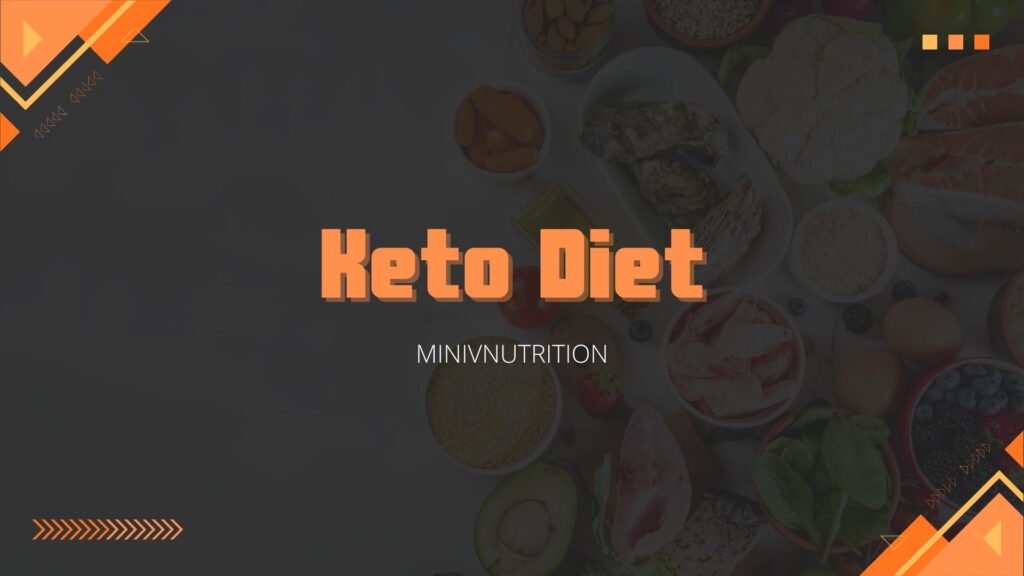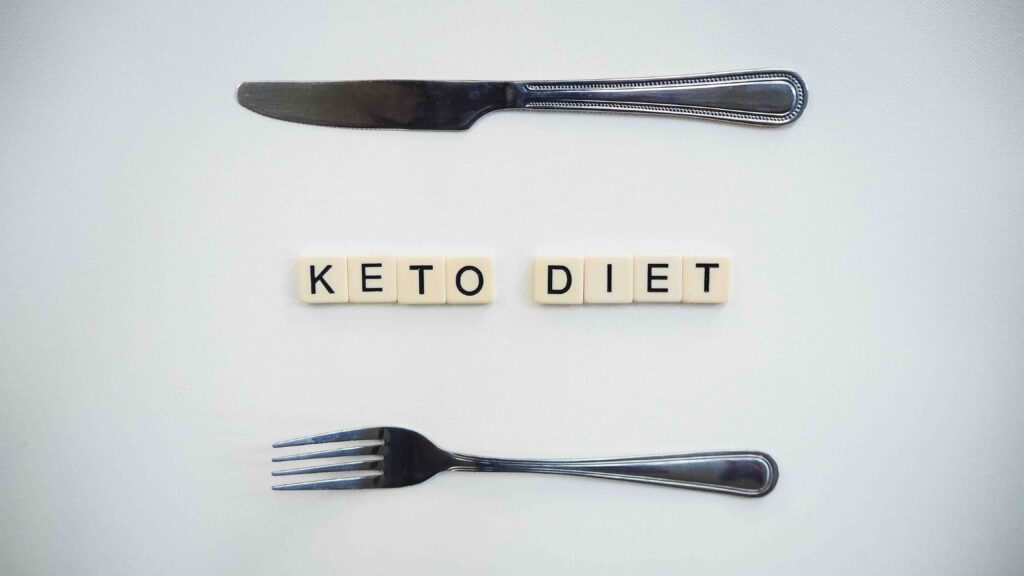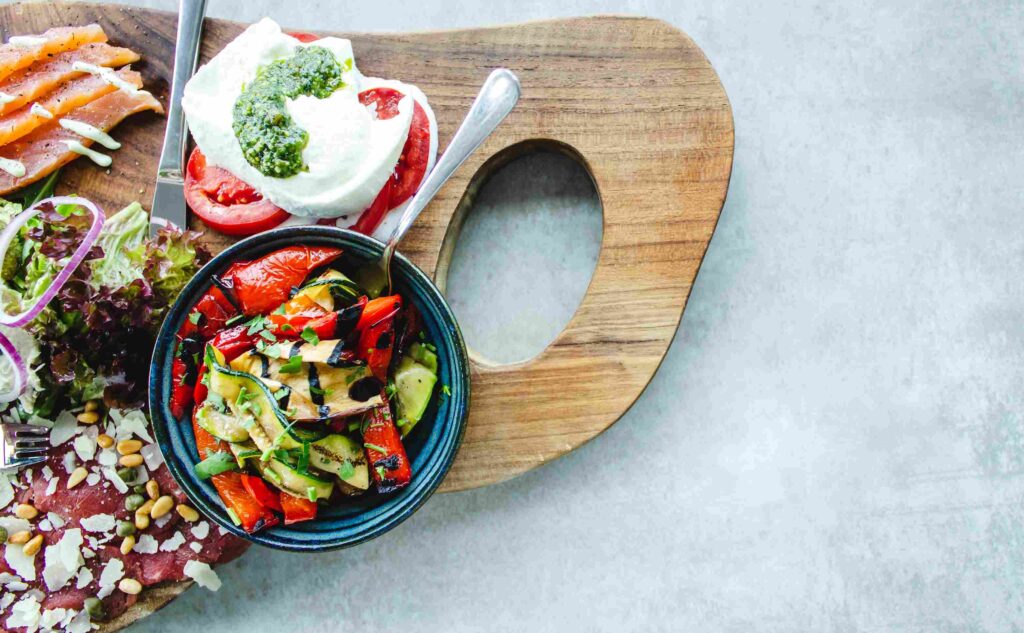The ketogenic (keto) diet has gained immense popularity as an effective way to lose weight and improve overall health. By significantly reducing carbohydrate intake and replacing it with fats, the keto diet forces your body into a state of ketosis, where it burns fat for fuel.
In this comprehensive guide, we’ll delve into what the keto diet is, how it works, its benefits for weight loss, getting started, food choices and recipes, common pitfalls to avoid, tips for success, and a concluding note on its potential impact on your journey to weight loss.

Table of Contents
What is the Keto Diet?
The ketogenic diet is a high-fat, low-carbohydrate eating plan designed to shift your body’s primary energy source from carbohydrates to fats. It typically consists of about 70-80% fat, 20-25% protein, and only 5-10% carbohydrates.
How Does the Keto Diet Work?
When you consume very few carbs, your body enters ketosis, a metabolic state where it starts breaking down fat into molecules called ketones. These ketones are then used for energy, leading to weight loss as your body taps into stored fat reserves.
Benefits of the Keto Diet for Weight Loss
- Rapid Fat Loss: The keto diet’s primary mechanism involves using fat for energy, which means your body becomes highly efficient at burning stored fat. This can lead to rapid fat loss, making it an attractive option for those seeking quick results.
- Reduced Appetite: Ketosis, the state in which your body burns fat for fuel, can naturally suppress appetite. This makes it easier to control calorie intake and may result in reduced feelings of hunger.
- Stable Blood Sugar: Lower carbohydrate intake on the keto diet helps stabilize blood sugar levels and reduces insulin spikes. This can potentially aid in weight loss by preventing the crashes in energy and hunger often associated with high-carb diets.
- Improved Metabolic Health: Some studies suggest that the keto diet may improve markers of metabolic health, including cholesterol levels and blood pressure. These improvements can contribute to overall well-being and weight management.
How to Get Started on the Keto Diet
- Consult a Healthcare Provider: Before starting the keto diet, especially if you have underlying health conditions or are taking medications, consult a healthcare provider to ensure it’s safe and appropriate for you.
- Plan Your Meals: Research keto-friendly recipes and plan your meals in advance to ensure you’re consuming the right balance of fats, proteins, and carbohydrates.
- Clean Out Your Pantry: To reduce temptation and maintain your commitment to the diet, remove high-carb foods from your kitchen. This step can help you avoid falling back into old eating habits.
- Monitor Macros: Tracking your macronutrient intake (fat, protein, carbs) is crucial on the keto diet. Use apps or online tools to monitor your macros and stay within the recommended ranges.

Keto Diet Foods and Recipes
The keto diet is a low-carbohydrate, high-fat eating plan that focuses on shifting your body into a state of ketosis, where it primarily burns fat for energy. To successfully follow the keto diet, it’s crucial to select the right foods and recipes that align with its principles. Here’s a comprehensive guide to keto-friendly foods and recipes to help you stay on track and enjoy your keto journey:
1. Healthy Fats
Healthy fats are the cornerstone of the keto diet. They provide the majority of your daily calories and help you maintain ketosis. Include sources like:
- Avocados: Rich in healthy fats and fiber, avocados are a keto staple.
- Nuts and Seeds: Almonds, walnuts, chia seeds, and flaxseeds are excellent choices.
- Olive Oil: Use olive oil for cooking and drizzling over salads.
- Coconut Oil: High in medium-chain triglycerides (MCTs), coconut oil is a popular fat source on keto.
2. Protein
Protein is essential for muscle maintenance and overall health on the keto diet. Opt for lean sources to avoid excessive calorie intake:
- Poultry: Skinless chicken and turkey breasts are lean protein options.
- Fish: Salmon, tuna, and trout are rich in omega-3 fatty acids and protein.
- Tofu: For vegetarians and vegans, tofu is a low-carb source of protein.
3. Low-Carb Vegetables
Non-starchy vegetables are low in carbs and high in fiber and essential nutrients. Incorporate these into your meals:
- Leafy Greens: Spinach, kale, and Swiss chard are keto-friendly and nutrient-dense.
- Broccoli: A versatile veggie that works well in various keto recipes.
- Cauliflower: Ideal for making keto-friendly substitutes like cauliflower rice and mashed cauliflower.
- Zucchini: Use zucchini noodles (“zoodles”) as a low-carb pasta alternative.
4. Berries
While fruits are generally higher in carbs, you can enjoy berries like strawberries and blueberries in moderation. They offer antioxidants and natural sweetness that can satisfy sweet cravings without derailing ketosis.
5. Keto-Friendly Snacks
When hunger strikes between meals, having keto-friendly snacks on hand is essential. Consider these options:
- Cheese: Hard cheeses like cheddar, mozzarella, and parmesan are low in carbs and high in fat and protein.
- Hard-Boiled Eggs: A convenient and protein-packed snack.
- Greek Yogurt (Unsweetened): Opt for full-fat Greek yogurt, which is lower in carbs compared to its low-fat counterparts.
6. Keto Recipes
Variety is key to maintaining a successful keto diet. Explore a wide range of keto recipes available online to keep your meals interesting and delicious. Some popular keto recipes include:
- Keto-Friendly Bread: Almond flour or coconut flour-based bread recipes.
- Keto Desserts: Satisfy your sweet tooth with treats like keto brownies, cheesecakes, and fat bombs.
Common Mistakes to Avoid
- Not Eating Enough Fiber: Focus on high-fiber, low-carb vegetables to maintain digestive health.
- Neglecting Hydration: Drinking plenty of water is crucial, especially in the initial stages of ketosis.
- Ignoring Electrolytes: Low-carb diets can lead to electrolyte imbalances, so consider supplementation.
- Overeating Protein: Excessive protein intake can interfere with ketosis, so keep it moderate.
Tips for Success
- Be Patient: It may take some time for your body to adapt to ketosis. Weight loss can be gradual.
- Stay Consistent: Consistency is key; stick to your keto diet and meal plans.
- Regular Exercise: Incorporate physical activity to enhance weight loss and overall health.

The keto diet is a powerful tool for weight loss, but it requires dedication and discipline. Understanding its principles, making mindful food choices, and avoiding common pitfalls will set you on the path to successful weight loss.
Remember to consult a healthcare provider before making significant dietary changes, and always listen to your body’s signals. With persistence and the right approach, the keto diet can help you achieve your weight loss goals and improve your overall well-being.


